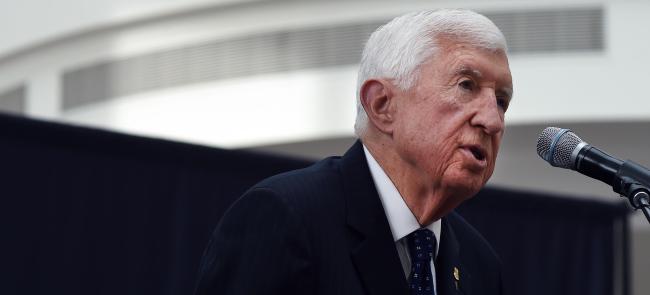
A government report released last week highlights a concern NGAUS has about the fielding of new equipment to the National Guard. The Government Accountability Office report notes that the Air Force plan to replace the aging HH-60G Pave Hawk rescue helicopter does not put any new aircraft with the Air National Guard until 2027, after active-component and Reserve units have received their full complement.
The Air Force plan is to first fill the squadrons with the highest average number of flying hours, which is why active-component units will see the new combat-rescue helicopter in fiscal 2020. Reserve units will receive them in fiscal 2026.
Matt Pincus, the NGAUS deputy legislative director, said the association has asked Congress to mandate concurrent fielding of the HH-60W, the Sikorsky-made replacement across all components.
“Air Guard Pave Hawks have been in high demand both at home and abroad,” he said. “Many of them suffer the same significant structural and mechanical issues that plague those in the active component. To make the Guard squadrons wait until the active component and the Reserve are fully equipped is unacceptable.”
GAO reviewed the Air Force’s HH-60G replacement program as required by the fiscal 2018 National Defense Authorization Act. The report is titled “Air Force Plans to Replace Aging Personnel Recovery Helicopter Fleet.”
Much of the Pave Hawk fleet, which entered service in 1982, has passed the expected flying life of 6,000 hours, the report found. Available helicopters average 7,100 flight hours. Those in the active component average about 2,000 more flight hours than those in the reserve component.
The aging fleet is showing obvious signs of wear. The GAO report says, “About 68 percent of the 96-helicopter fleet were mission-capable as of fiscal year 2017, below the Air Force desired mission-capable rate of 75 percent.” Aircraft undergoing depot-level maintenance in fiscal 2017 spent an average of 322 days in the shop, compared with 233 days in fiscal 2007.
While the Air Guard waits for the replacement, the Air Force will supply it with refurbished Army helicopters that have about 3,000 fewer flying hours than the Guard’s current aircraft. The helicopters will be upgraded to HH-60G configurations in a program called Operational Loss Replacement, the GAO report says, quoting from the Air Force plan.
Pincus called this a stopgap measure providing cover for the Air Force to delay fielding the new helicopter to the Guard.
“We preach Total Force and concurrent fielding among all three components,” he said, “but the Air Force’s plan for HH-60 recapitalization highlight that this is primarily theoretical.”
The report notes that the Air Force Reserve and Air Guard did not concur with the Air Force fielding schedule because the service did not coordinate with the other components when awarding the contract for the HH-60W in 2014.
Four Air Guard squadrons fly the HH-60G. Three are the 101st Rescue Squadron, part of the 160th Rescue Wing at Gabreski Air National Guard Base, New York; the 129th Rescue Squadron, part of the 129th Rescue Wing at Moffet Air Force Base, California; and the 210th Rescue Squadron, part of the 176th Wing at Joint Base Elmendorf-Richardson, Alaska. Also, the 188th Rescue Squadron of the New Mexico Air Guard is part of a classic association with an active-component wing at Kirtland Air Force Base, New Mexico.












